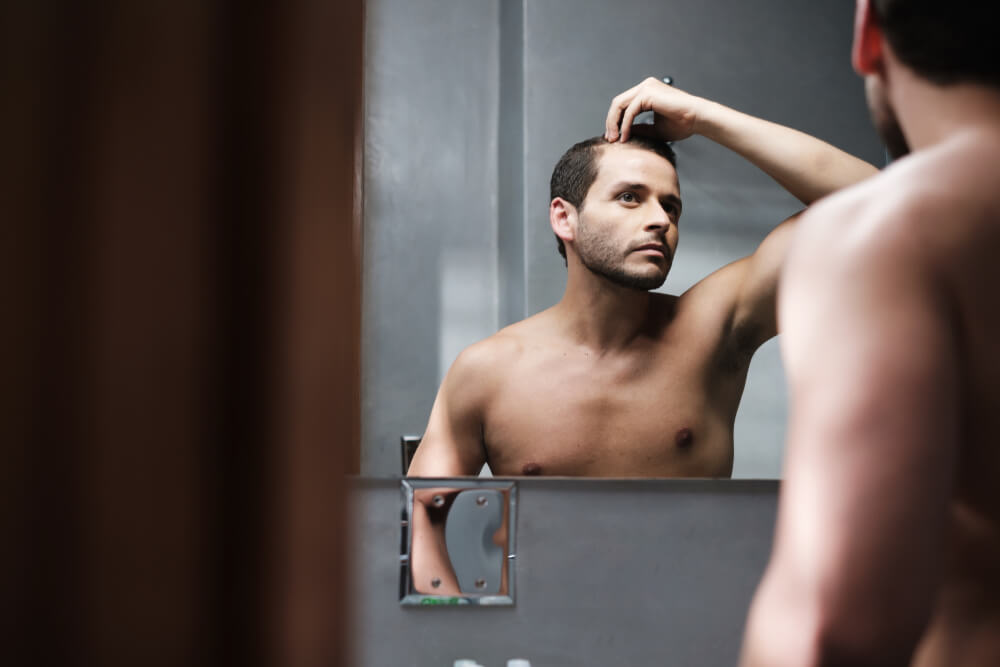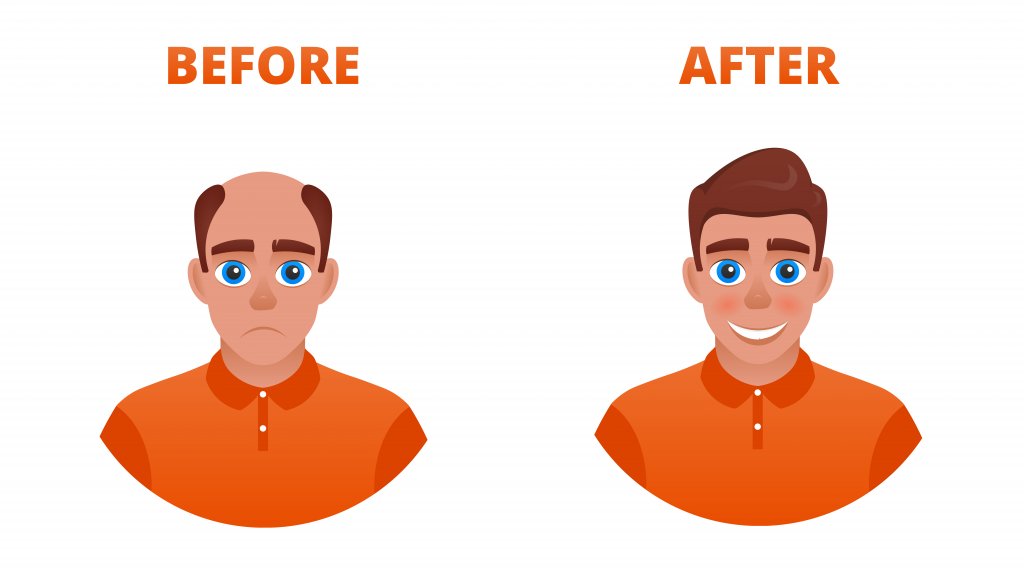What Is Minoxidil?

Minoxidil was created as a vasodilator drug to be used in the treatment of severe arterial hypertension when this condition was resistant to other treatments.
While it was being used for this purpose, hypertrichosis (increased body hair) was found to occur in some patients and since then it has been formulated into topical alopecia preparations.
So, the oral format of Minoxidil is marketed under the name Loniten® and recommended in the treatment of severe arterial hypertension or in cases of peripheral organ damage that don’t respond to the usual treatment with a diuretic associated with an antihypertensive.
Due to its anti-alopecia properties, Minoxidil is administered via the skin in cases of androgenic alopecia.
Mechanism of action of Minoxidil
The mechanism of action by which this drug stimulates hair growth is currently unknown.
The possibility of an alteration of androgen metabolism in the scalp has been suggested. It has also been proposed that, due to the vasodilator effect of this drug, microcirculation around the hair follicle may be increased.
In in vitro and in vivo studies, it has been shown that Minoxidil stimulates the growth of keratinocytes. However, it doesn’t increase the number of hair follicles; what it does is to partially convert miniaturized and intermediate hairs into terminal hairs, thus slowing down the progression of alopecia androgenic.
This effect has a variable intensity from one patient to another and is usually achieved after 4 months of treatment.
Indications

Topically, Minoxidil is indicated for the treatment of androgenic alopecia of moderate intensity in both men and women.
Posology
The most used presentations are Minoxidil 2% and 5% in cutaneous solution. 1 ml of solution is administered every 12 hours on the scalp.
The maximum daily dose is 2 ml regardless of the area to be treated and should be applied 7 days a week for at least 6 months. Using a dose higher than the recommended dose doesn’t improve the result of the treatment.
An increase in hair growth will begin to be observed after 4 months. There’s clinical evidence of acceleration of hair loss and a decrease in hair density when treatment is suspended, which may return to pre-treatment levels after 3-4 months of interruption.
Application method
Minoxidil should be applied to a perfectly dry scalp, starting from the center of the area to be treated, and spreading the product by massaging with the fingertips over the entire desired area.
After its application, washing hands with plenty of water is highly recommended as there’s a risk of stimulating hair growth in any part of the body that comes into contact.

Precautions
- It shouldn’t be used on or near wounds or dermatosis of the scalp as it could cause an increase in absorption and, in turn, the systemic effects of the drug.
- It’s advisable to take blood pressure measurements, especially during the first month of treatment, as there’s the possibility of slight local absorption through the scalp.
- It can cause irritation and dryness of the skin because it’s usually formulated with ethanol and propylene glycol as excipients.
- Treatment with Minoxidil isn’t recommended in sudden irregular hair loss.
- An increase in hair loss may occur in the initial phase, 2-6 weeks, due to the change from the telogen phase to the anagen growth phase caused by the drug (the loss of old hair that’s replaced by new hair).
Adverse reactions
The most frequent adverse reactions are mild dermatological alterations in the area of application such as scaling, erythema, dermatitis, itching, and dryness. Much less frequently, and derived from the absorption of the drug, reactions may be observed in the following areas:
- Cardiovascular: tachycardia, palpitations and hypotension.
- Neurological: headaches, dizziness, and paraesthesia.
- Respiratory: dyspnea, sinusitis, and rhinitis.
Interactions
- Tretinoin: This combination may increase percutaneous absorption of minoxidil as a result of increased permeability of the stratum corneum.
- Betamethasone dipropionate: This can increase minoxidil concentrations in local tissues and decrease systemic absorption.
- Antihypertensives: There’s the possibility that minoxidil may increase the chances of suffering orthostatic hypotension in patients treated with peripheral vasodilators and antihypertensive drugs.
- It shouldn’t be administered in the same area with other topical preparations such as corticosteroids, retinoids or occlusive ointments that increase the risk of absorption.
Minoxidil was created as a vasodilator drug to be used in the treatment of severe arterial hypertension when this condition was resistant to other treatments.
While it was being used for this purpose, hypertrichosis (increased body hair) was found to occur in some patients and since then it has been formulated into topical alopecia preparations.
So, the oral format of Minoxidil is marketed under the name Loniten® and recommended in the treatment of severe arterial hypertension or in cases of peripheral organ damage that don’t respond to the usual treatment with a diuretic associated with an antihypertensive.
Due to its anti-alopecia properties, Minoxidil is administered via the skin in cases of androgenic alopecia.
Mechanism of action of Minoxidil
The mechanism of action by which this drug stimulates hair growth is currently unknown.
The possibility of an alteration of androgen metabolism in the scalp has been suggested. It has also been proposed that, due to the vasodilator effect of this drug, microcirculation around the hair follicle may be increased.
In in vitro and in vivo studies, it has been shown that Minoxidil stimulates the growth of keratinocytes. However, it doesn’t increase the number of hair follicles; what it does is to partially convert miniaturized and intermediate hairs into terminal hairs, thus slowing down the progression of alopecia androgenic.
This effect has a variable intensity from one patient to another and is usually achieved after 4 months of treatment.
Indications

Topically, Minoxidil is indicated for the treatment of androgenic alopecia of moderate intensity in both men and women.
Posology
The most used presentations are Minoxidil 2% and 5% in cutaneous solution. 1 ml of solution is administered every 12 hours on the scalp.
The maximum daily dose is 2 ml regardless of the area to be treated and should be applied 7 days a week for at least 6 months. Using a dose higher than the recommended dose doesn’t improve the result of the treatment.
An increase in hair growth will begin to be observed after 4 months. There’s clinical evidence of acceleration of hair loss and a decrease in hair density when treatment is suspended, which may return to pre-treatment levels after 3-4 months of interruption.
Application method
Minoxidil should be applied to a perfectly dry scalp, starting from the center of the area to be treated, and spreading the product by massaging with the fingertips over the entire desired area.
After its application, washing hands with plenty of water is highly recommended as there’s a risk of stimulating hair growth in any part of the body that comes into contact.

Precautions
- It shouldn’t be used on or near wounds or dermatosis of the scalp as it could cause an increase in absorption and, in turn, the systemic effects of the drug.
- It’s advisable to take blood pressure measurements, especially during the first month of treatment, as there’s the possibility of slight local absorption through the scalp.
- It can cause irritation and dryness of the skin because it’s usually formulated with ethanol and propylene glycol as excipients.
- Treatment with Minoxidil isn’t recommended in sudden irregular hair loss.
- An increase in hair loss may occur in the initial phase, 2-6 weeks, due to the change from the telogen phase to the anagen growth phase caused by the drug (the loss of old hair that’s replaced by new hair).
Adverse reactions
The most frequent adverse reactions are mild dermatological alterations in the area of application such as scaling, erythema, dermatitis, itching, and dryness. Much less frequently, and derived from the absorption of the drug, reactions may be observed in the following areas:
- Cardiovascular: tachycardia, palpitations and hypotension.
- Neurological: headaches, dizziness, and paraesthesia.
- Respiratory: dyspnea, sinusitis, and rhinitis.
Interactions
- Tretinoin: This combination may increase percutaneous absorption of minoxidil as a result of increased permeability of the stratum corneum.
- Betamethasone dipropionate: This can increase minoxidil concentrations in local tissues and decrease systemic absorption.
- Antihypertensives: There’s the possibility that minoxidil may increase the chances of suffering orthostatic hypotension in patients treated with peripheral vasodilators and antihypertensive drugs.
- It shouldn’t be administered in the same area with other topical preparations such as corticosteroids, retinoids or occlusive ointments that increase the risk of absorption.
- Velázquez: Farmacología básica y clínica 17ª edición Lorenzo P., Moreno A., Leza J.C., Lizasoain I., Moro M.A.
- www.vademecum.es
Este texto se ofrece únicamente con propósitos informativos y no reemplaza la consulta con un profesional. Ante dudas, consulta a tu especialista.







